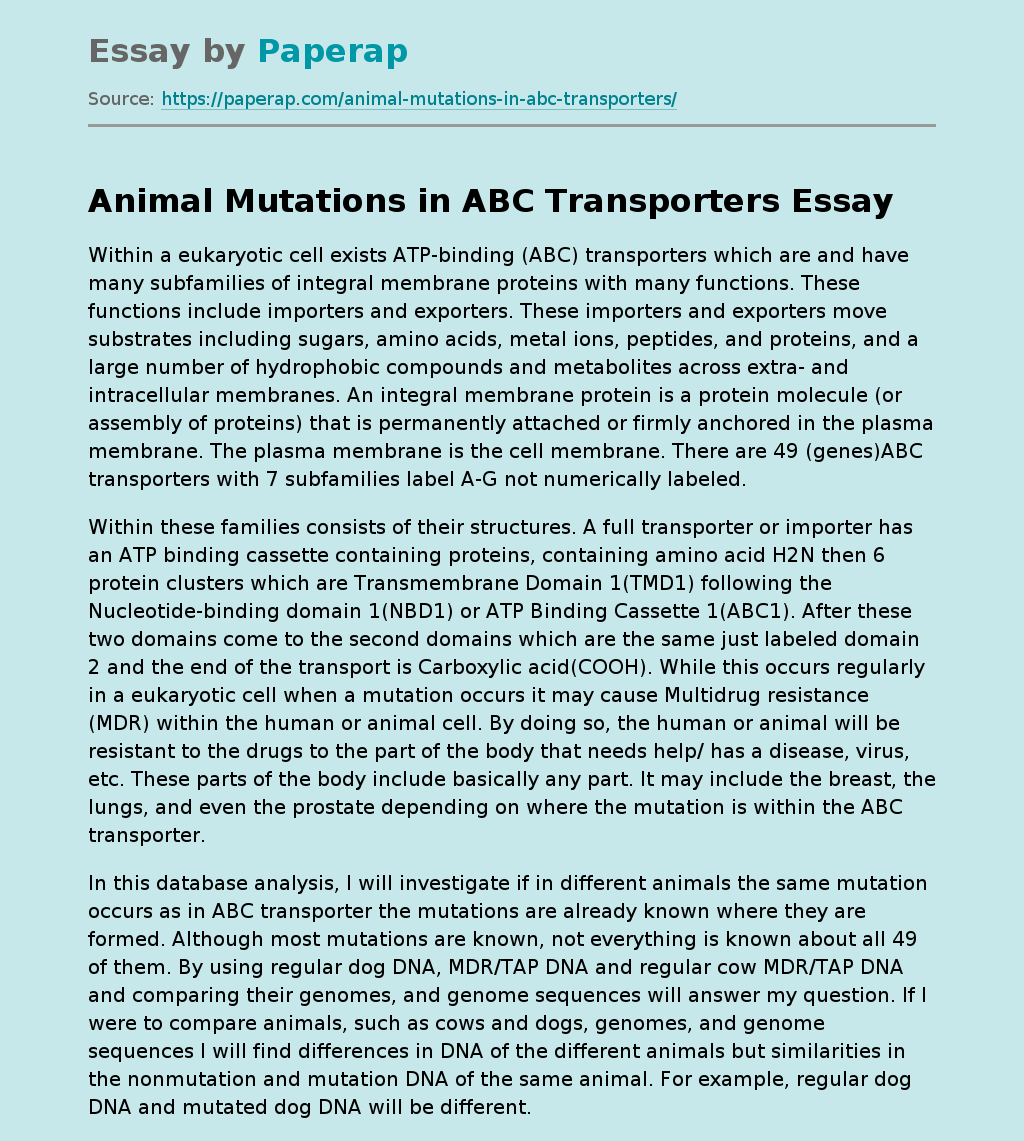Animal Mutations in ABC Transporters
Within a eukaryotic cell exists ATP-binding (ABC) transporters which are and have many subfamilies of integral membrane proteins with many functions. These functions include importers and exporters. These importers and exporters move substrates including sugars, amino acids, metal ions, peptides, and proteins, and a large number of hydrophobic compounds and metabolites across extra- and intracellular membranes. An integral membrane protein is a protein molecule (or assembly of proteins) that is permanently attached or firmly anchored in the plasma membrane. The plasma membrane is the cell membrane.
There are 49 (genes)ABC transporters with 7 subfamilies label A-G not numerically labeled.
Within these families consists of their structures. A full transporter or importer has an ATP binding cassette containing proteins, containing amino acid H2N then 6 protein clusters which are Transmembrane Domain 1(TMD1) following the Nucleotide-binding domain 1(NBD1) or ATP Binding Cassette 1(ABC1). After these two domains come to the second domains which are the same just labeled domain 2 and the end of the transport is Carboxylic acid(COOH).
While this occurs regularly in a eukaryotic cell when a mutation occurs it may cause Multidrug resistance (MDR) within the human or animal cell. By doing so, the human or animal will be resistant to the drugs to the part of the body that needs help/ has a disease, virus, etc. These parts of the body include basically any part. It may include the breast, the lungs, and even the prostate depending on where the mutation is within the ABC transporter.
In this database analysis, I will investigate if in different animals the same mutation occurs as in ABC transporter the mutations are already known where they are formed.
Although most mutations are known, not everything is known about all 49 of them. By using regular dog DNA, MDR/TAP DNA and regular cow MDR/TAP DNA and comparing their genomes, and genome sequences will answer my question. If I were to compare animals, such as cows and dogs, genomes, and genome sequences I will find differences in DNA of the different animals but similarities in the nonmutation and mutation DNA of the same animal. For example, regular dog DNA and mutated dog DNA will be different.
Animal Mutations in ABC Transporters. (2021, Dec 05). Retrieved from https://paperap.com/animal-mutations-in-abc-transporters/

